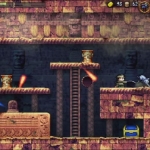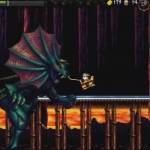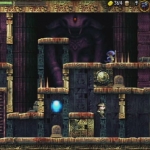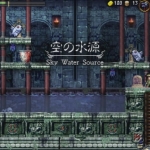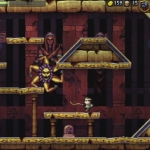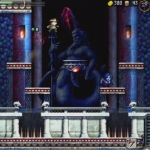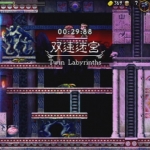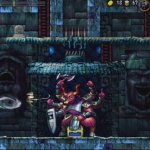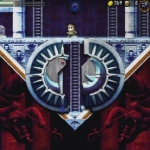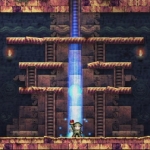From the makers of Valet Parking 1989TM comes 1950s Lawn Mower Kid sTM for the Nintendo DSiWare serviceTM. This is a frantic game all about mo(w)vment. Keep the TNT-kids mowing at all times and keep away from dogs, ducks, cats and angry Old Joe in suburban America of the 1950s. Control time and speed through Mr Mowman’s mysterious contraptions. Avoid mowing down intricate flowerbeds, crashing into neatly laid tables or rabid angry animals.
Matti Larsson, CEO of Zordix:
“This little gem have been brewing with us for quite a while now and we have been able to tweak, test and perfect the gameplay so that we know that it’s both fun and challenging. We are exceptionally satisfied with the music for the game which is a perfect fit for the Nintendo DSi™”
Dual Stylus Gameplay Brings Immersive Sports Challenges to Nintendo 3DS
SANTA CLARA, Calif., (June 21, 2011) – Leading video game publisher and developer NAMCO BANDAI Games America Inc., today releases DualPenSports™ exclusively for the Nintendo 3DS™ system. DualPenSports is the only Nintendo 3DS title with dual-action stylus control, enabling handheld gamers a new and immersive way to compete in classic sports games. Each copy of DualPenSports will come packaged with two special sports styluses, making sure all players will be able to experience the exciting challenges and training modes with dual stylus gameplay.
Taking advantage of the Nintendo 3DS, DualPenSports brings a unique twist to traditional handheld sports games with its dual stylus gameplay and 3D visuals. Offering seven exciting sports challenges, including Soccer, Boxing, Archery and more, players can take on a number of dual-handed exercises for a stimulating mental workout and improved hand eye coordination.
Thanks to JT for the tip!
Latest Adaptations in Famed Bejeweled Franchise Coming in Q4 2011 to Nintendo DS®, PlayStation®3, PSN, Xbox 360®and Xbox LIVE®Arcade
SEATTLE, Washington – June 2 1 , 2011 — PopCap Games, the worldwide leader in casual games, today announced plans to bring five new adaptations of its famed Bejeweled® 3 franchise to the Nintendo DS ®, PlayStation ® 3, PSN, Xbox 360 ®, and Xbox LIVE ® Arcade. This move marks the first time a Bejeweled title will appear on all the top video game platforms simultaneously. The games are scheduled to ship in Q4 2011 in both North America and Europe.
“Critics agree that Bejeweled 3 raised the standard for match-3 games to new heights,” said Ed Allard, studio head at PopCap Games. “This holiday, we’re bringing that experience to PlayStation 3, PSN, Xbox 360, Xbox LIVE, and Nintendo DS gamers with adaptations that look great and play even better on each platform.”
Talk about odd! An Ocarina of Time 3D player encountered this glitch after completing the game and creating a new file. Somehow, the Master Sword ended up in his possession. That’s one glitch I haven’t seen yet…
Thanks to tipsd9video for the tip!
According to Satoru Iwata, Nintendo started thinking about a second screen for the Wii U as early as 2007. But the company originally thought about making the screen separate from the controller. Also, it was quite a bit smaller since LCDs costed much more back in 2007.
“Considering how expensive screens were then, it did not make sense to have this big-sized LCD. We would not have been able to come up with a reasonable price point. … We had not decided when we were going to launch the new console [at that point], but we knew we needed to be flexible.”
